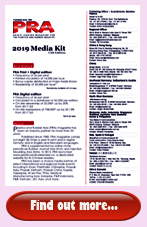PRA Chinese
Rubber Journal Asia Injection Moulding Asia Energy, Oil & Gas Asia
VISIT OUR OTHER SITES:
PRA Chinese
Rubber Journal Asia
Injection Moulding Asia
Energy, Oil & Gas Asia
BASF, Clariant looking at divesting respective pigments businesses

German chemical giant BASF has stated that it is looking at selling its pigments business, as it continues to divest lower-margin businesses. The business unit, which posts sales of about EUR1 billion, has been carved out into a separate legal entity.
It is expected to be sold by the end of 2020, according to BASF CEO Martin Brudermüller, who was quoted at the company’s annual general meeting of its full-year results that posted a drop in earnings for 2018.
The announcement comes a month after Swiss competitor Clariant was quoted as having put its pigments business up for sale, due to intense competition and price pressure from Asian companies.
Meanwhile, in spite of lower sales from China, due to what BASF says were challenging developments for the results shortfall as a result of the trade conflict between the US and China, BASF is targeting the mega-country, with a number of investment projects including the expansion at its joint venture site with Sinopec in Nanjing to build another steam cracker with a capacity of 1 million tonnes/year of ethylene. BASF also signed an agreement with the Guangdong government to establish a new chemicals site in Zhanjiang.
India is another market where BASF wants to invest. The company recently signed a MOU with Adani to investigate a major joint investment in the acrylics value chain. The designated site would be located at Mundra port in the Indian state of Gujarat. This would be BASF’s largest investment in India to date and its first CO2-neutral production facility.
BASF started 2019 by receiving conditional clearance from the European Commission to acquire Solvay’s polyamide business. To address competition concerns, BASF must divest parts of the original transaction scope to a third-party buyer, namely manufacturing assets and innovation capabilities of Solvay’s polyamide business in Europe. Brudermüller commented: “With this acquisition, BASF can still achieve its strategic goals and considerably strengthen the business with polyamide 6.6.”
Meanwhile, industry sources say Clariant has been seeking support from the Deutsche Bank to find a suitable buyer for its pigments business. With an estimated value of nearly US$821 million, Clariant is seeking to sell the business as part of a streamlining that will be completed by the end of 2020, says a Reuters report.
The above news comes against the back of Sabic having bought a 25% stake in Clariant last year, ending a dispute between the Swiss company and US-based activist investor White Tale that had already thrown a spanner in the planned merger of Clariant with US-based Huntsman Corp. in 2017.
Four years ago, Clariant started carving out its plastics and coatings business for divestment. As part of the move, it transferred products such as plastics colouring, additives and pigments into a separate subsidiary.
Clariant’s structure comprises seven business units, including additives, catalysts, functional minerals, industrial and consumer specialities, masterbatches and oil and mining services.
(PRA)Subscribe to Get the Latest Updates from PRA Please click here
©2018 Plastics and Rubber Asia. All rights reserved.

©2018 Plastics and Rubber Asia. All rights reserved.
Home Terms & Conditions Privacy Policy Webmail Site Map About Us



































































